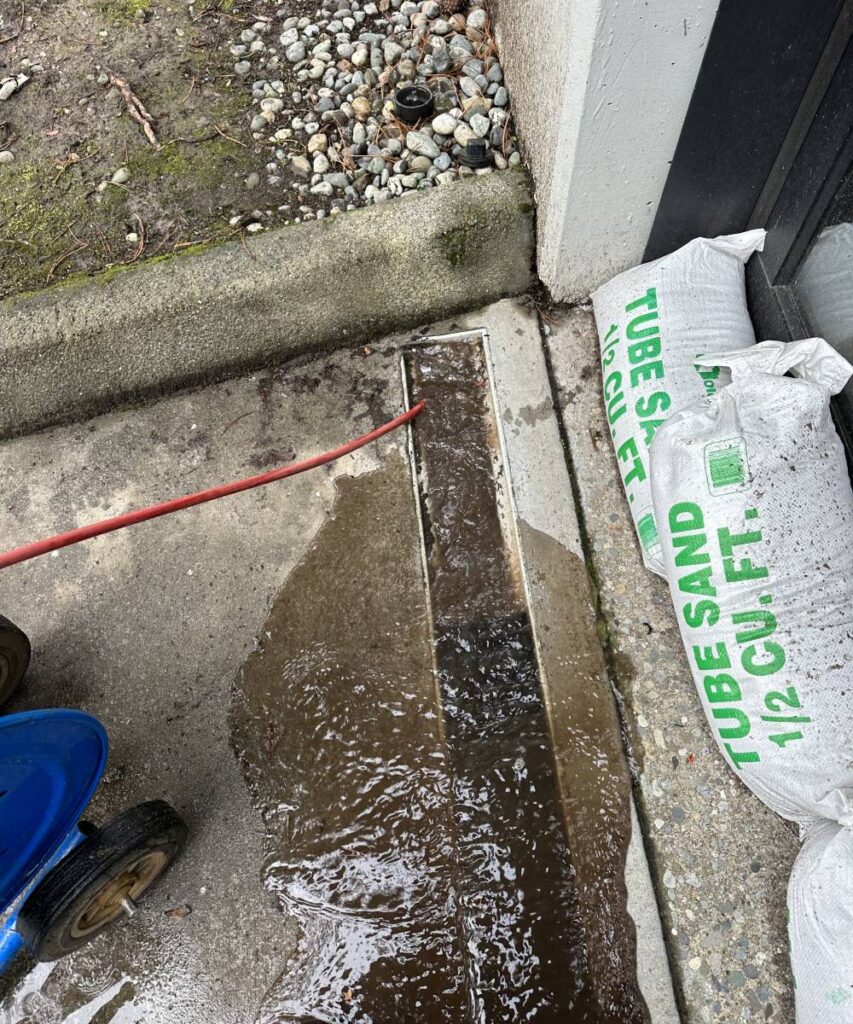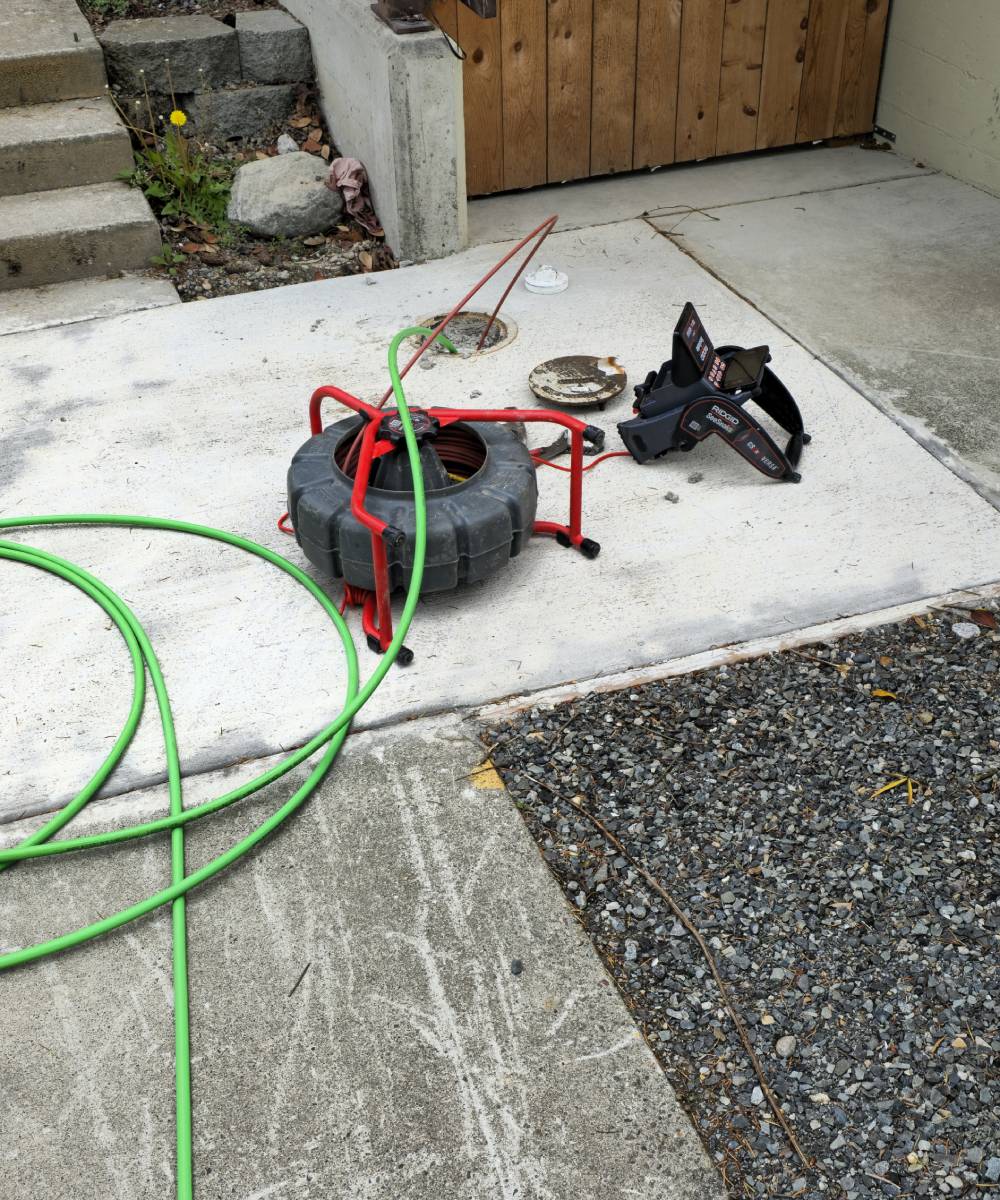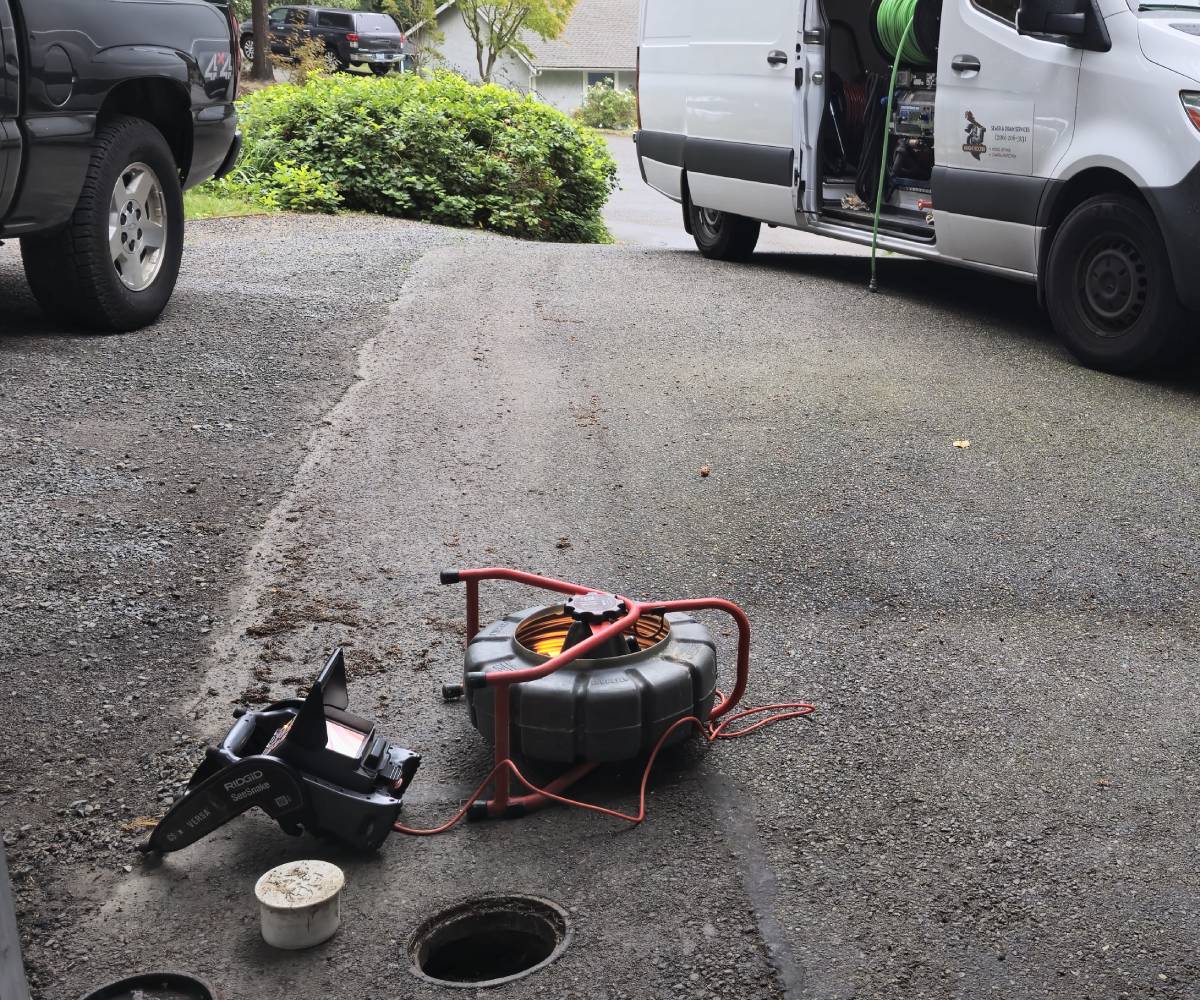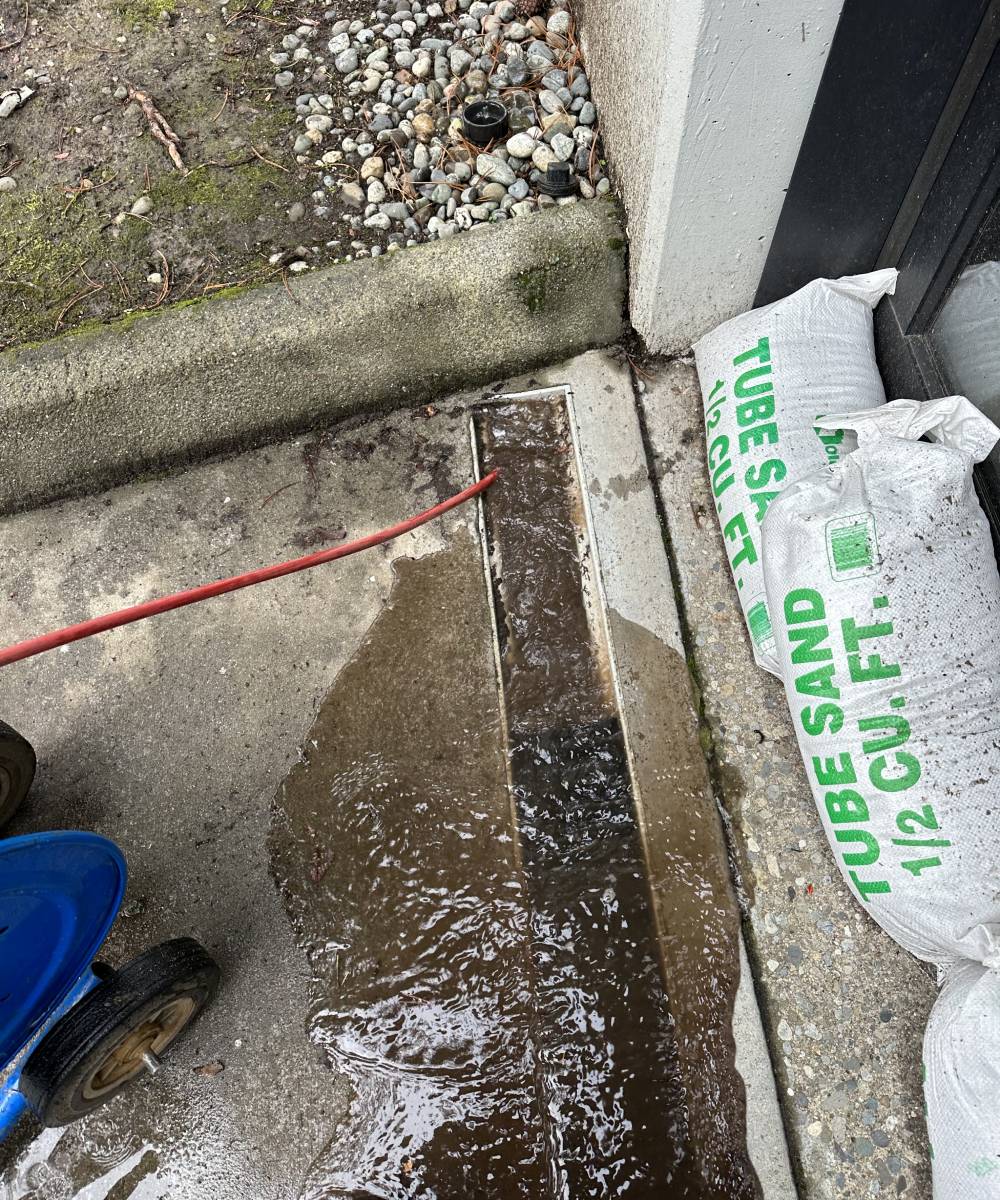Purchasing a home is one of life’s biggest milestones, and ensuring every part of the property is in good condition is essential. While homebuyers often focus on visible features like the kitchen, flooring, or roof, one critical yet hidden component is frequently overlooked: the sewer system. A damaged sewer line can lead to significant repairs, health hazards, and disruptions. At KnightRooter, we specialize in professional camera inspection in Seattle and drain cleaning in Seattle, helping homebuyers make informed decisions. This guide explores why a sewer system inspection is vital before buying a home, what it entails, and how it can safeguard your investment.
Why Sewer System Inspections Matter for Homebuyers
A sewer system inspection, often called a sewer scope, is a non-invasive procedure that uses advanced camera technology to assess the condition of a home’s sewer lines. Unlike a general home inspection, which may not cover underground plumbing, a sewer scope provides a detailed look at the pipes connecting your home to the municipal sewer or septic system.
Why is this important? Sewer line issues can be invisible but catastrophic if ignored. For example, a cracked pipe or tree root intrusion can lead to sewage backups, foundation damage, or health risks from harmful gases like methane. In Seattle, homeowners are responsible for maintaining the side sewer line from their property to the city’s main sewer, making pre-purchase inspections critical. Skipping this step could mean inheriting a problem that turns your dream home into a nightmare.
What Is a Sewer Scope Inspection?
A sewer scope inspection involves inserting a high-definition, waterproof camera attached to a flexible cable into the home’s sewer line, typically through a cleanout or drain access point. The camera records real-time footage, allowing a licensed plumber or inspector to identify issues like blockages, cracks, or misaligned pipes.
At KnightRooter, our advanced camera systems capture high-resolution images and include locator technology to pinpoint the exact location and depth of any problem. This precision ensures accurate diagnoses and efficient repairs. Unlike older methods that required digging up yards, modern sewer scopes are minimally invasive, making them ideal for homebuyers who want to evaluate a property without causing damage.
Common Sewer Line Issues Uncovered During Inspections
Sewer scope inspections reveal a range of issues that could affect a home’s plumbing system. Here are the most common problems found:
- Tree Root Intrusion: Tree roots are drawn to the nutrient-rich water in sewer lines and can infiltrate joints or cracks, causing blockages or pipe damage.
- Cracks or Fractures: Aging pipes, especially those made of clay, cast iron, or Orangeburg, are prone to cracking due to soil shifts or wear over time.
- Blockages: Grease buildup, debris, or foreign objects (e.g., construction materials) can obstruct flow, leading to slow drains or backups.
- Bellying or Sagging: When soil under a pipe compacts unevenly, it creates a low spot or “belly” that traps water and debris, increasing the risk of clogs.
- Offset Joints: Pipes that have shifted out of alignment can cause leaks or blockages.
- Corrosion: Older metal pipes may corrode, reducing their diameter and impeding water flow.
These issues are especially common in Seattle’s older neighborhoods, where homes built before 1960 may still have outdated clay or cast iron pipes.
Benefits of a Sewer Inspection Before Buying a Home
A sewer scope inspection offers numerous advantages for homebuyers:
- Avoid Surprises: Identifying issues before closing allows you to negotiate repairs or adjust your offer with the seller.
- Protect Your Investment: Knowing the sewer system’s condition ensures your home remains a sound asset.
- Prevent Health Hazards: Leaking sewer lines can release harmful gases or contaminate groundwater, posing risks to your family.
- Plan for Maintenance: Inspections provide a baseline for future sewer care, helping you stay proactive.
- Peace of Mind: A healthy sewer system lets you move into your new home with confidence.
Unlike some competitor resources that focus only on immediate benefits, KnightRooter highlights the long-term value of inspections, including their role in maintaining property value and environmental safety.

The Sewer Inspection Process: What to Expect
Here’s what happens during a typical sewer scope inspection with KnightRooter:
- Preparation: Our technician identifies an access point, such as a cleanout or toilet, to insert the camera. If no cleanout exists, we may need to remove a toilet temporarily.
- Camera Insertion: A flexible, waterproof camera is fed into the sewer line, transmitting live video to a monitor.
- Inspection: The technician examines the footage for signs of damage, blockages, or other issues, noting their location and severity.
- Reporting: You receive a detailed report, including video footage, a written summary, and recommendations for repairs or maintenance.
- Consultation: We walk you through the findings, explaining what they mean and your options moving forward.
The process is quick, typically taking 30 minutes to an hour, depending on the property’s size and the sewer system’s complexity.
Why Choose KnightRooter for Camera Inspections in Seattle?
KnightRooter is Seattle’s trusted choice for sewer system inspections and drain cleaning services. Here’s why:
- Advanced Technology: Our high-resolution cameras and locator systems ensure precise diagnoses.
- Experienced Technicians: Our licensed plumbers have extensive experience with Seattle’s unique plumbing challenges.
- Customer-Centric Service: We prioritize your peace of mind, providing detailed reports and expert advice.
- Comprehensive Solutions: From inspections to repairs and maintenance, we’re your one-stop shop for sewer care.
- Local Expertise: We understand Seattle’s soil conditions, rainfall patterns, and aging infrastructure, tailoring our services to your needs.
Unlike competitors who may offer limited insights, KnightRooter provides a holistic approach, addressing both immediate concerns and long-term sewer health.
Signs You Need a Sewer Inspection
Certain red flags suggest a sewer scope is necessary, even if you’re not experiencing obvious plumbing problems:
- Slow Drains: Water taking longer to drain from sinks, tubs, or toilets may indicate a partial blockage.
- Foul Odors: Sewage smells from drains or your yard could signal leaks or backups.
- Lush Lawn Patches: Unusually green grass may indicate a leaking sewer line fertilizing your yard.
- Water Backups: Sewage backing up into your home is a clear sign of a serious issue.
- Older Homes: Properties built before 1980 are more likely to have aging pipes that need inspection.
- Tree-Heavy Yards: Large trees near sewer lines increase the risk of root intrusion.
If you notice any of these signs, contact KnightRooter for a professional camera inspection in Seattle.
Tips for Homebuyers: Negotiating Repairs After an Inspection
A sewer scope inspection can give you leverage during home purchase negotiations. Here’s how to use the findings effectively:
- Request Repairs: If the inspection reveals minor issues, ask the seller to fix them before closing.
- Negotiate Terms: For significant problems, request concessions like warranties to cover future repairs.
- Secure Credits: Sellers may offer credits to address sewer issues, reducing your out-of-pocket expenses.
- Consult Experts: Work with KnightRooter to understand the severity of issues and your options.
- Walk Away if Necessary: If the sewer system is severely damaged and the seller won’t cooperate, consider looking for another property.
Unlike some competitor articles that overlook negotiation strategies, we empower homebuyers with practical steps to protect their interests.
Environmental and Health Impacts of Sewer Issues
Sewer problems don’t just affect your home—they can have broader consequences. Leaking sewer lines can contaminate soil and groundwater, harming local ecosystems and potentially affecting community water supplies. In Seattle, where heavy rainfall can exacerbate leaks, this risk is particularly concerning.
Health-wise, sewer issues can expose your family to harmful pathogens or gases like methane, which is odorless but dangerous in high concentrations. Backups can also introduce mold or bacteria into your home, posing respiratory risks. A sewer scope inspection helps you catch these issues early, protecting both your household and the environment.
This aspect is often missing from competitor content, making our article more comprehensive by addressing the bigger picture of sewer health.
Conclusion
A sewer system inspection is a crucial step in the home-buying process that can protect you from unexpected repairs and hazards. By identifying issues like tree root intrusion, cracks, or blockages before you close, you can safeguard your investment and enjoy peace of mind in your new home. At KnightRooter, our expert camera inspections in Seattle and drain cleaning services ensure your sewer system is ready for the future.
Don’t let a hidden sewer problem disrupt your home purchase. Contact KnightRooter today or visit knightrooter.com to schedule your sewer scope inspection.
FAQ
1. How often should I get a sewer inspection?
For homes less than 10 years old, inspect every 1–2 years. For older homes, every 6–12 months is ideal, especially in Seattle’s rainy climate.
2. Is a sewer scope included in a standard home inspection?
No, most home inspections don’t include sewer scopes. You’ll need to hire a plumber or specialized inspector like KnightRooter.
3. Can I skip a sewer inspection on a new home?
Even new homes can have sewer issues due to construction debris or poor installation. A sewer scope is always recommended.
4. What happens if the inspection finds a problem?
You’ll receive a report detailing the issue and repair options. You can negotiate with the seller or plan for repairs post-purchase.
5. How long does a sewer camera inspection take?
Most inspections take 30–60 minutes, depending on the property and access points.
6. Why are sewer inspections important in Seattle?
Seattle’s soil instability, heavy rainfall, and aging infrastructure make sewer issues common, especially in older homes.
For professional and fast drain cleaning Bothell, drain cleaning Seattle, and drain cleaning Bellevue, contact KnightRooter. Our team is ready to provide the best solutions for your drain issues.






No comment yet, add your voice below!